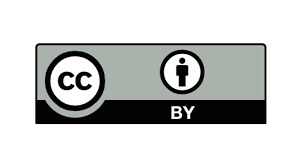Mobile Learning Communities, Mastery Learning and the 2 Sigma Problem as strategies for prior knowledge in activity resolution.
Comunidades de aprendizaje móvil, MasteryLearning y el Problema 2 sigma como estrategias para el conocimiento previo, en la resolución de actividades
Main Article Content
This experience forms part of an investigation that addresses the future of technologies, within and beyond the classroom; it is based on an action research whose goal is to plan, act, observe and reflect (Kemmis, 1989). Said research also seeks to transform the initial situation and break ground in new teaching-learning spaces that explore strategies mediated by technologies, in the resolution of activities by participants of the course: “The Web, a space for learning, UPEL-IMPM-Táchira edition.” Taken as a point of departure were Bloom’s ideas (1968, 1984) pertaining to the Mastery Learning instructional strategy and tutoring (Sigma 2 Problem), respectively, through a learning community (Fidalgo, 2014), in which the group of learners uses common tools (a smartphone with WhatsApp or social networks like Facebook and Twitter) in a single environment. The sample was composed of 40 undergraduate and graduate professors belonging to various disciplines, some possessing digital competences. By the end of the study, it was determined that initiating group discussions in a mobile learning community with tools like WhatsApp, supported by Facebook groups and online tutorials as a strategy designed for the completion of activities within each thematic unit, led to a greater understanding of the contents, obtaining 90% of participants’ previous optimum knowledge and enabling them to confront and complete given tasks. Furthermore, learning was personalized by making it adaptive and flexible, in order to complete its analysis, after four (4) weeks inside the virtual classroom, with the proposal of other online tutorials and for those participants with overdue activities. Consequently, an 85% recovery was achieved; this facilitated the course’s successful conclusion.
Downloads
Article Details
Asociación Universitaria de Formación del Profesorado, AUFOP. (Abril, 2010). Revista interuniversitaria de formación del profesorado, (67).
Block, J. H. y Anderson, L. W. (1975). Mastery Learning in Classroom Instruction.New York: MacMillan.
Bloom, B. (1968).El aprendizaje para el dominio (LearningforMastery). UCLA-CSEIP.
Bloom, B. (1984). The 2 Sigma Problem: The Search for Methods of Group Instruction as Effective as One-to-One Tutoring. Educational Researcher. Recuperado de http://web.mit.edu/5.95/readings/bloom-two-sigma.pdf.
Castañeda, L. y Adell, J. (2013).Entornos personales de aprendizaje: claves para el ecosistema educativo en red. Recuperado de http://www.um.es/ple/libro/.
Farnos, Juan. (2015). De Mastery Learning al Personalized Learning! (Educación Disruptiva). Recuperado de https://juandomingofarnos.wordpress.com/2015/09/13/del-mastery-learning-al-personalized-learning-educacion-disruptiva/.
Fidalgo, Ángel. (2014).Comunidad de aprendizaje. Recuperado de https://innovacioneducativa.wordpress.com/2014/01/26/comunidades-de-aprendizaje/.
García F., N. (2002). Sistema de trabajo con las Tics en el sistema educativo y en la formación de profesionales: la comunidad de aprendizaje. Recuperado de http://www.um.es/ead/red/6/comunidades.pdf.
González, R.M. (2015) Motivación para la “inclusión”, características y necesidades de los estudiantes y docentes en la universidad. (Aplicativo con análisis de gráficos estilísticos). Eco.Mat. 2015; 6(1): 107-115. Recuperado de http://revistas.ufps.edu.co/ojs/index.php/ecomatematico/article/view/464/481.
Kemmis, S. (1989).Investigación en la acción. Barcelona: Ediciones Graó. España.
Latorre, Antonio (2003).La investigación - acción: conocer y cambiar la práctica educativa. Recuperado de https://books.google.co.ve/books?id=e1PLxGcRf8gC&printsec=frontcover#v=onepage&q&f=false.
Meza, J. (2012). Modelo pedagógico para proyectos de formación virtual. Ministerio federal de cooperación económica y de desarrollo. Recuperado de https://gc21.giz.de/ibt/var/app/wp342P/1522/wp-content/uploads/2013/02/Ebook-final.pdf.
Ontoria, A. y otros (2006). Mapas conceptuales. Una técnica para aprender. (13ª.ed.). Madrid: Narcea, S.A. de ediciones.
Pabón-Gómez Jorge. (2014). Las Tics y la lúdica como herramientas facilitadoras en el aprendizaje de la matemática. Eco.Mat. 2014; 5(1): 37-48. Recuperado en http://revistas.ufps.edu.co/ojs/index.php/ecomatematico/article/view/62/76.
Pacheco-Carrascal, N. (2016) “La motivación y las matemáticas”, Eco.Mat. 2016; 7(1): 149-158.Recuperado dehttp://revistas.ufps.edu.co/ojs/index.php/ecomatematico/aricle/view/1026/1060.
Pérez, A (2009). La comunicación y la interacción en contextos virtuales de aprendizaje. Apertura. Recuperado dehttp://www.udgvirtual.udg.mx/apertura/index.php/apertura/rt/printerFriendly/15/18.
Piaget (1968) Educación e instrucción. Buenos Aires: Proteo.
Siemens, G. (2004). Connectivism: a learning theory for the digital age. Recuperado de http://www.elearnspace.org/Articles/connectivism.htm.
Vygotsky. (1978). El método instrumental en psicología. Krúpskaia.




 Perfil Google Scholar
Perfil Google Scholar



